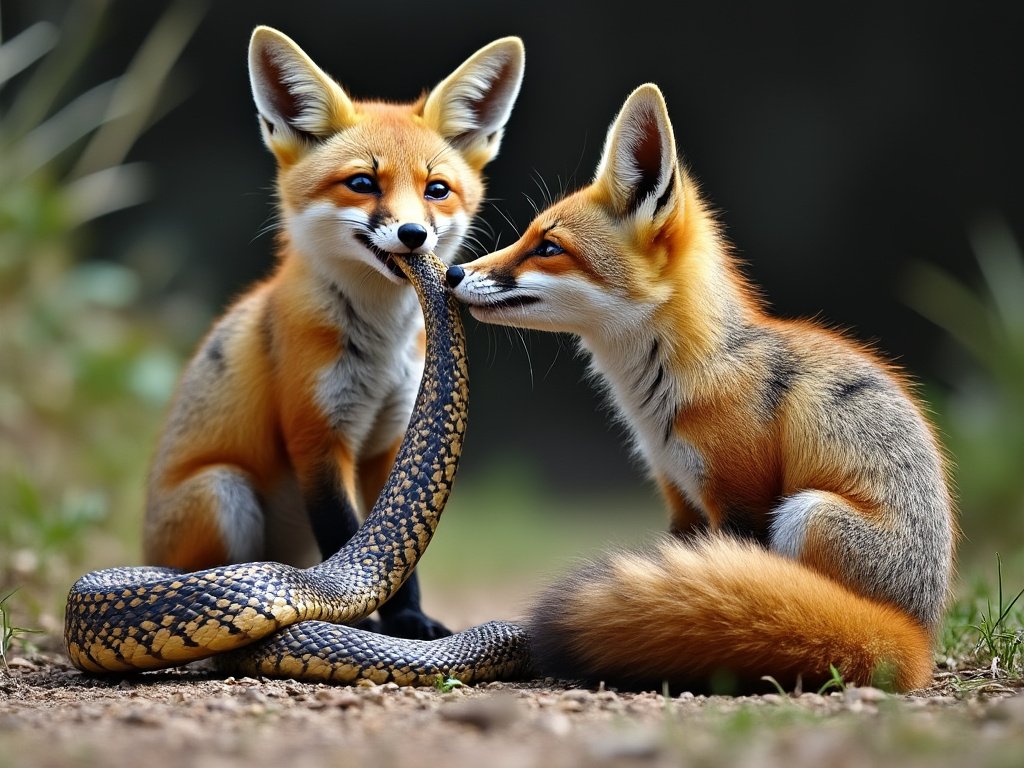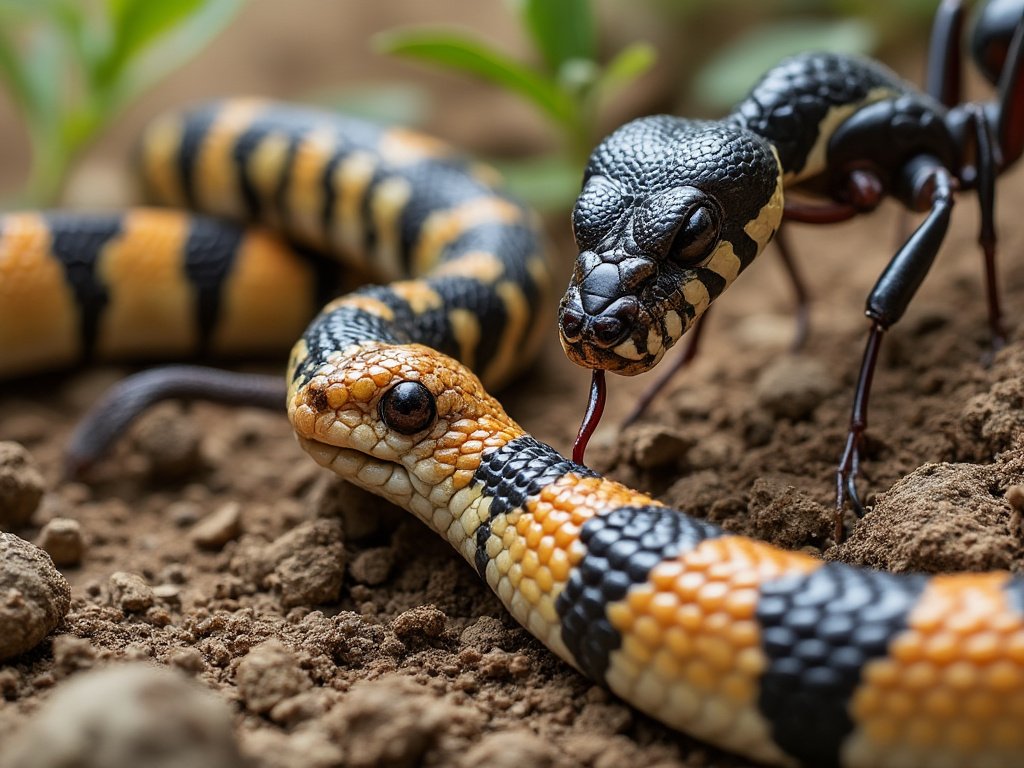What eats snakes? Snakes are fascinating creatures that play an important role in the ecosystem. But what eats these reptiles? In this article, we will discuss the various animals that hunt and eat snakes. From birds of prey to large mammals, there are many predators that consider snakes a tasty meal. We will also explore the different hunting strategies that these animals use to capture and kill their prey. So, if you are curious to know what eats snakes, read on
List Of Animals That Hunt And Eat Snakes
Here is the list of Animals that hunt and eat snakes. You can almost find all the animals that eat snakes.
1. Hawks

Hawks utilize a variety of hunting strategies to capture snakes, including high-speed dives, surprise attacks, and ambush tactics. Their keen eyesight allows them to spot prey from great distances, often soaring high above the ground before diving down at incredible speeds to catch their target.
They can also adapt their techniques based on the environment and type of prey, employing methods like low soaring and hovering to maximize their hunting success.
Species That Target Snakes
Notable hawk species that hunt snakes include:
- Red-tailed Hawk: Known for its ability to take down larger prey, including snakes.
- Cooper’s Hawk: Agile and effective in forested areas, adept at hunting smaller snakes.
2. Eagles

Eagles possess significant size and strength advantages that aid in hunting snakes. Their powerful talons can exert immense pressure, allowing them to grasp and immobilize their prey effectively. Eagles are also equipped with strong beaks designed for tearing flesh, making them formidable predators.
Notable Eagle Species
Key eagle species that are known to hunt snakes include:
- Golden Eagle: Renowned for its agility and strength, capable of capturing large snakes.
- Bald Eagle: Often preys on various animals, including snakes, utilizing its keen eyesight and powerful flight
3. Raccoons

Raccoons are primarily nocturnal and exhibit opportunistic feeding habits. They forage at night, using their dexterous front paws to search for food in various environments, including murky water and leaf litter. This behavior allows them to uncover a diverse diet that includes small mammals, insects, eggs, and snakes.
Raccoons are adaptable and thrive in a variety of habitats. They prefer riparian areas, brushy regions, and wooded environments but are also commonly found in urban settings where they scavenge from garbage cans and human food sources.
4. Mongooses

Mongooses possess several adaptations that make them effective snake hunters. Their speed and agility allow them to dodge strikes from snakes, while their resistance to certain venoms enables them to engage with venomous species without succumbing to their effects.
Famous Mongoose Species
Notable mongoose species known for hunting snakes include:
- Indian Mongoose: Renowned for its ability to combat venomous snakes like cobras.
- Egyptian Mongoose: Often preys on various snake species, showcasing its hunting prowess.
5. Foxes

Foxes are opportunistic feeders that include snakes in their diet when available. They hunt for various prey, adjusting their diet based on seasonal availability and local abundance of food sources.
Foxes are prevalent in diverse habitats, including forests, grasslands, and urban areas. Their adaptability allows them to hunt for snakes across different environments, often taking advantage of the presence of these reptiles in their territories.
6. Larger Snakes

Larger snakes employ two primary strategies for subduing prey: constriction and venom. Constrictors, such as pythons and boas, wrap around their prey to immobilize it, while venomous snakes utilize toxic bites to incapacitate their targets before consumption.
Notable snake-eating species include:
- Eastern Indigo Snake: Known for its ability to consume other snakes, including venomous varieties.
- King Snake: Famous for preying on other snakes due to its immunity to many types of snake venom
7. Alligators and Crocodiles

Alligators and crocodiles utilize distinct hunting strategies depending on their environment. In water, they often employ ambush tactics, stealthily approaching prey while mostly submerged, and then launching a powerful attack.
On land, they work in teams to drive prey into specific areas or use their speed to chase down smaller animals. Observations have shown that these reptiles can coordinate their actions, such as forming a circle around fish to create a bait ball before taking turns to capture them.
These reptiles are primarily found in tropical and subtropical regions across Asia, Australia, Africa, and the Americas. Their presence significantly impacts local snake populations, as they are effective predators of various snake species. For instance, the American alligator is prevalent in the southeastern United States, while the Nile crocodile is found throughout much of Africa.
8. Large Frogs

Large frogs capture and consume small snakes using their long, sticky tongues and powerful jaws. When a frog detects movement, it can quickly extend its tongue to snatch the snake, often swallowing it whole due to its flexible jaw structure.
Notable frog species that prey on snakes include:
- Bullfrog: Known for its voracious appetite and ability to consume various small animals.
- African Clawed Frog: Recognized for its aggressive feeding behavior and capacity to take down small snakes.
9. Spiders

Some spider species have developed intricate web-building techniques that can effectively trap small snakes. These webs are designed to ensnare unsuspecting prey that venture too close, utilizing sticky silk strands to immobilize them quickly.
10. Ants

Certain ant species exhibit cooperative hunting behaviors that enable them to overpower snakes. By working together in large groups, they can surround and subdue snakes much larger than themselves, showcasing remarkable teamwork in their predatory tactics.
11. Wild Boars

Wild boars may consume snakes while foraging for food. Their omnivorous diet allows them to eat a variety of prey, including small reptiles like snakes, which they might encounter in their search for roots and other food sources.
12. Domestic Cats

Domestic cats retain strong hunting instincts that drive them to hunt small snakes as part of their natural behavior. They often stalk and pounce on snakes, using their agility and sharp claws to capture them effectively. This instinctual behavior can be observed even in well-fed household cats when they encounter snakes in their environment.
The Role Of Predation In Ecosystems
The law of nature cannot be changed by anyone. Every animal has some role, so is the role of predation in the ecosystem.
Population Control of Snake Species
Snake predation helps regulate snake populations, preventing overpopulation that can lead to resource competition and habitat degradation.
Biodiversity Maintenance
Diverse predator-prey interactions support ecosystem health by promoting a variety of species, enhancing resilience against environmental changes.
Adaptations in Snake Behavior and Physiology
To avoid predation, snakes have developed adaptations like camouflage for blending into their surroundings and defensive postures to appear larger or more intimidating. These strategies are crucial for their survival.
Conclusion
In conclusion, understanding what eats snakes reveals the intricate dynamics of ecosystems. Snakes are vital prey for a wide range of predators, including birds of prey like hawks and eagles, mammals such as raccoons and foxes, and even larger snakes. Each of these animals employs unique hunting strategies that highlight the adaptability of nature.
The predation of snakes plays a crucial role in population control, preventing overpopulation and promoting biodiversity. It also drives the evolution of various adaptive behaviors in snakes, such as camouflage and defensive postures. By recognizing the importance of these predator-prey relationships, we gain a deeper appreciation for the delicate balance of ecosystems.
As you explore the fascinating world of wildlife, understanding what eats snakes can enhance your knowledge of ecological interactions and the vital role every species plays in maintaining the health of our environment. This insight not only fosters respect for nature but also underscores the need for conservation efforts to protect these interconnected systems.


